SOMETHING’S GOT TO BE DONE WITH THE MOORFIELD CAR PARK
The Moorfield multi-storey car park was built in the early 1970s. It is part of a major re-engineering of traffic management in Truro Town Centre. The architect was the late John Taylor. The re-engineering included the by-pass (inexplicably named ‘Morlaix Avenue’), inner distributor routes (City Road/Charles St/Fairmantle Street to Fairmantle St Roundabout and Union Street/St Clement Street to Trafalgar Roundabout), it transformed Truro and the prospects for those who live and work there.
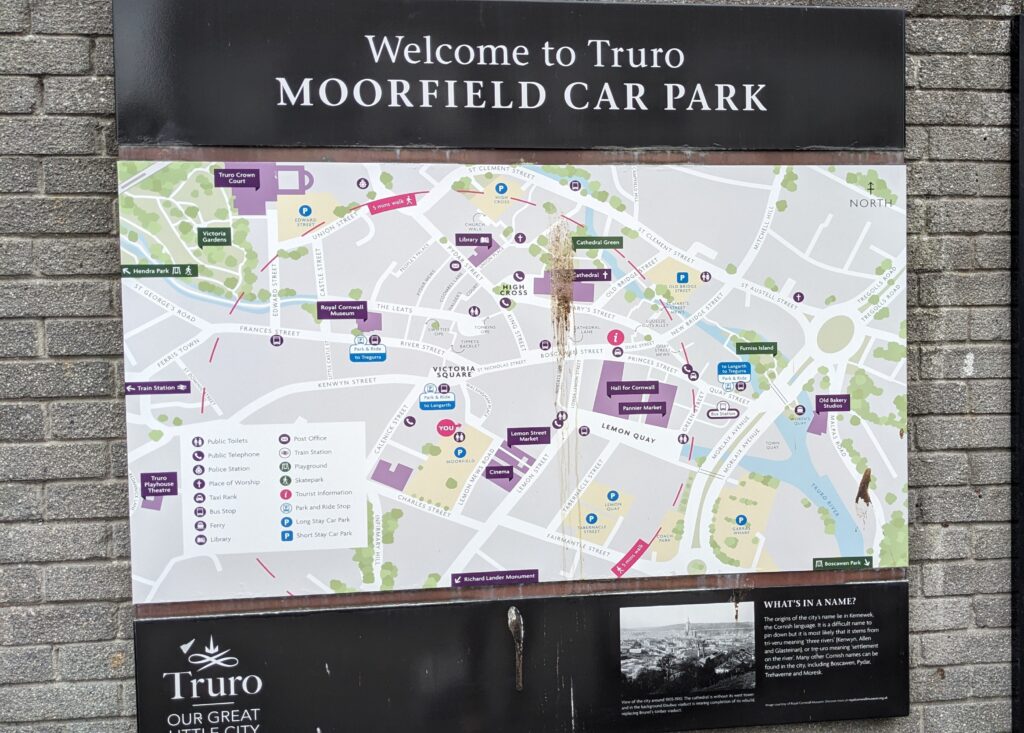
In addition, the scheme provided rear servicing for much of the primary shopping area, which attracted the national chains which trade in Truro. That part of the scheme
- capped the Town Leat (now The Leats), serving Pydar St, King St, St Nicholas St, River St:
- the High Cross multi-storey complex servicing Boots and (the-then) Tescos,
- the undercroft of Moorfield CP serving Malletts, Argos and (the-then) Somerfield supermarket:
- using St Mary’s Street (linking via Old Bridge Street to the St Clement Street distributor road) to service what is now Mountain Warehouse, the Co-op, The Entertainer and others – in Boscawen Street..
This was a massive undertaking. It paved the way to Truro becoming a major shopping centre whilst also supporting a wealthy business and commercial sector, entertainment/hospitality, culture and town centre residents. It continues to underpin modern Truro very well, although it is given little credit for doing so – sadly!
Moorfield muti-storey car park is a key installation, served by the inner distributor road, supporting the town centre and the Lemon Street business district. It was controversial, partly because it was built on land used historically for events – wrestling, fairs, markets – and partly because the original concept included demolishing Walsingham Place. This prompted Sir John Betjeman to visit, give the Mayor a ‘dressing down’, and the Philip Sambell masterpiece to be prominently featured in his ‘Shell Guide to Truro’ – he described it as ‘Mercifully preserved’.
We are now hearing reports that the car park structure is nearing the end of its life. I am lucky enough to have been shown the evidence of this, and it is clear. There is no imminent risk of collapse, but loading has to be tested, calculated to be strictly limited in future. The structure may well need to be modified, or to come down.
What if it has to be demolished?
There are several points to be made:
Keep the Moorfield for car parking
- The fundamental importance of this site as a car park serving business and retailing has been well and truly proven over time. Whatever happens, it must continue as a car park – even though with reduced capacity – a ground level open-air car park may well accommodate the reducing amount of vehicular parking demand as climate change demands more public transport and different ways of doing things – but, we should make no mistake – we will need a centrally located car park – employment, productivity, value and future evolution all depend upon it. Just ask the cinema, Malletts or any other business, particularly in the Victoria Square area.
CC must pay for revenue-stripping car parks
- Cornwall Council (like the district councils before it) has pushed car park charges to produce a surplus which feeds the general revenue budget each year – pre-Covid this was often in excess of £10m per year. There is no capital reserve to manage car parking strucvtures like Moorfield.
Now, Moorfield will need money to either demolish, modernise or refurbish – having siphoned off tens of millions, the onus must be on Cornwall Council to ensure that timely analysis and action is taken – there can be no excuse – the parking gravy train has (so to speak!) come home to roost. Whatever has to happen, it must happen quickly – Truro cannot afford delay or a long period without the Moorfield (in some format or other).
CC must make temporary town centre provision
- Whilst urging speedy action, whatever happens will take some time to sort out. In the meantime, businesses all around the Moorfield are suffering, day and night. On top of everything else this is a pressure which should not be there. Cornwall Council must make a temporary provision – it’s no good saying ‘Use the Park & Ride’ – many professionals rely on their cars to generate business, and losing time bussing up and down is going to undermine their performance. Truro needs something in place by the Autumn so that the Christmas retail and hospitality trade is not undermined, and more quickly than that if businesses in Lemon Street are to keep going. Perhaps an option lies on the Pydar Street site!
THE MOOR FIELD IS NOT FOR SALE
- CC could, if confronted with demolition, opt to sell if the site could be sold. This land has been in public ownership in the town since time immemorial but, unlike The Green, there are no covenants or other constraints (except that the mineral rights are owned by others).. Any notion of selling should be discounted as a non-starter – Truro needs the Moorfield to support its trade – NOT FOR SALE! Neither is it acceptable for the Moorfield to be ‘transferred’ to Treveth!
Cornwall Council must remind itself (daily) that it is a local authority, not a private business, and that its function is to provide services – including well-located, good-condition car parking in town centres like Truro.
Losing an important Truro Building
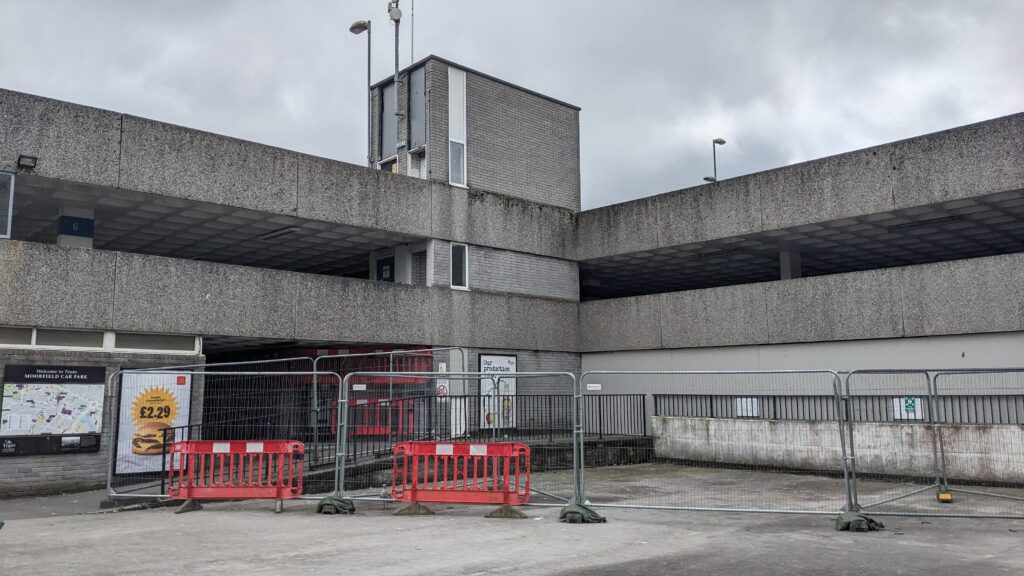
Moorfield CP is mainly boarded up now to prevent vandalism and trespass. We should not allow ourselves to be manipulated into believing that the multi-storey is derelict. We – the town and Cornwall Council – have choices to make. Most of those choices involve doing what is constructive to encourage the economy, employment, productivity, accessibility and employment. The town must be included in the decision-making processes.
And one last point! Whilst accepting that there are structural problems, mostly stemming from not having as much understanding then, as we do now, of how to construct using concrete, the Moorfield Car Park is an elegant and well-designed building, slotted-in to a more complex structure which includes the supermarket, Argos store and rear servicing for Malletts. It has served the town well for 60 years or so. Let us recognise the value and the aesthetic of Moorfield, and the contributions of that community or architects gathered together by John Crowther and John Taylor. Whilst not being too sentimental about it, we should acknowledge their architectural achievement and the role it has played in generating the sort of wealth that enables owners of property in the town centre to sustain a very high quality Conservation Area, including examples of the best of our post-War collection of buildings, and to sustain a level of trade and commerce in the town which, uniquely, as I write, still has five high street banks operating in Front Street..
Bert Biscoe


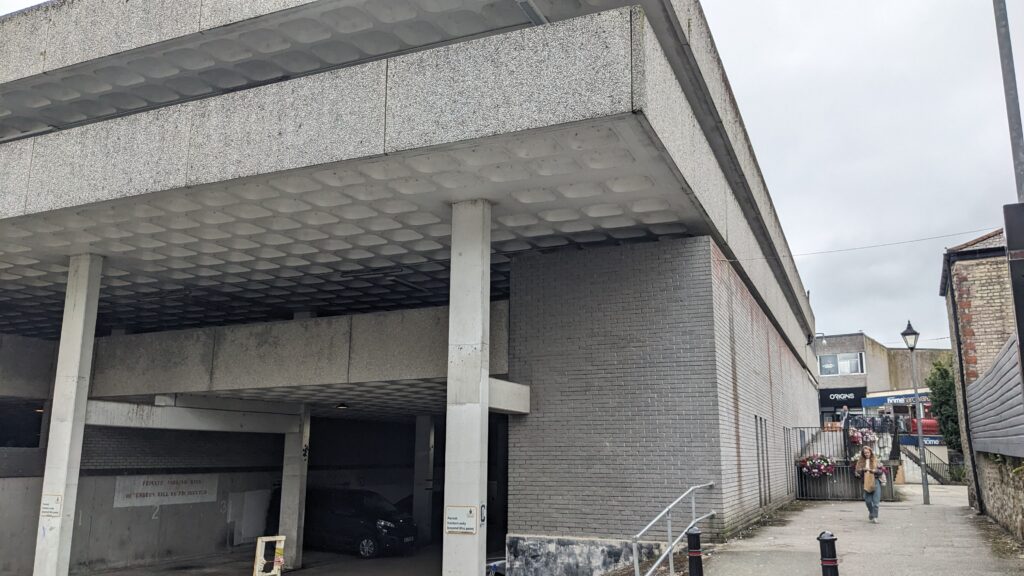
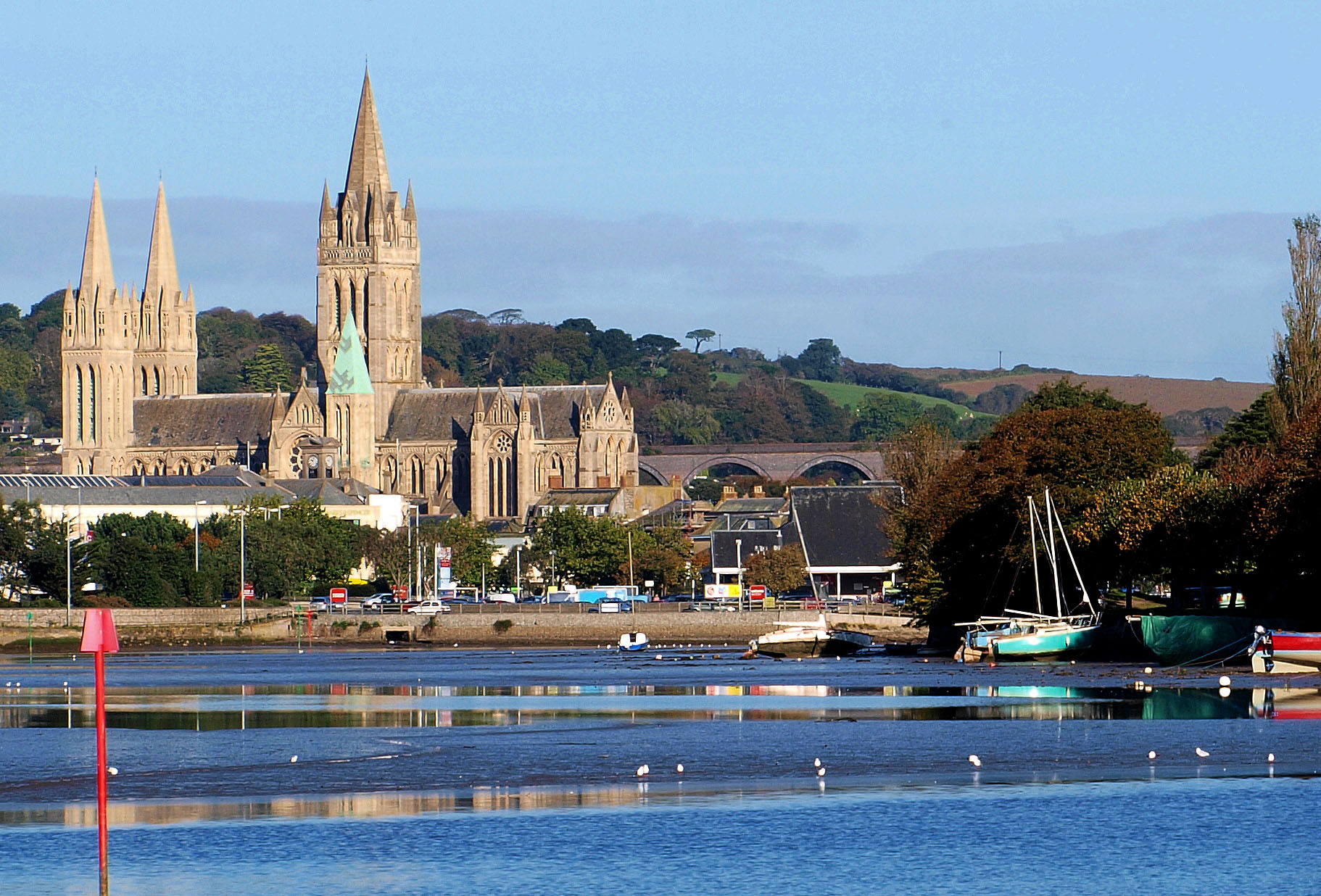
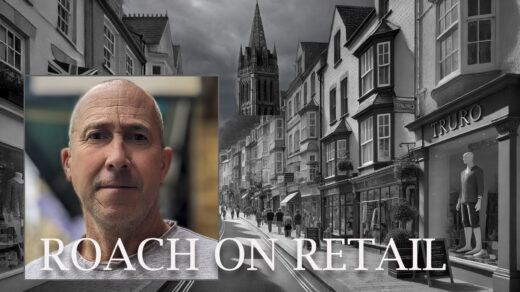
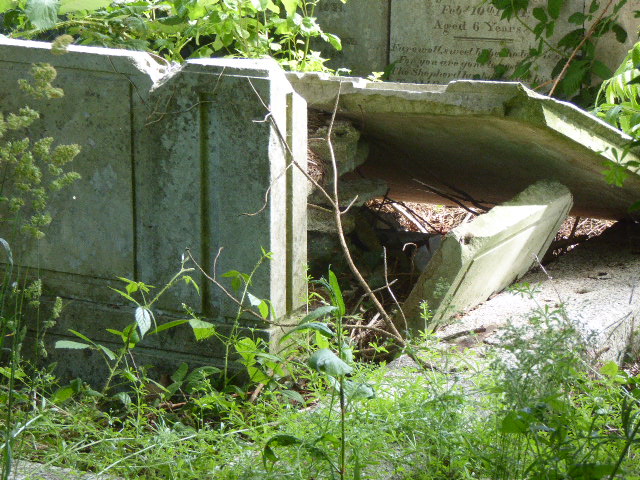

repair it!